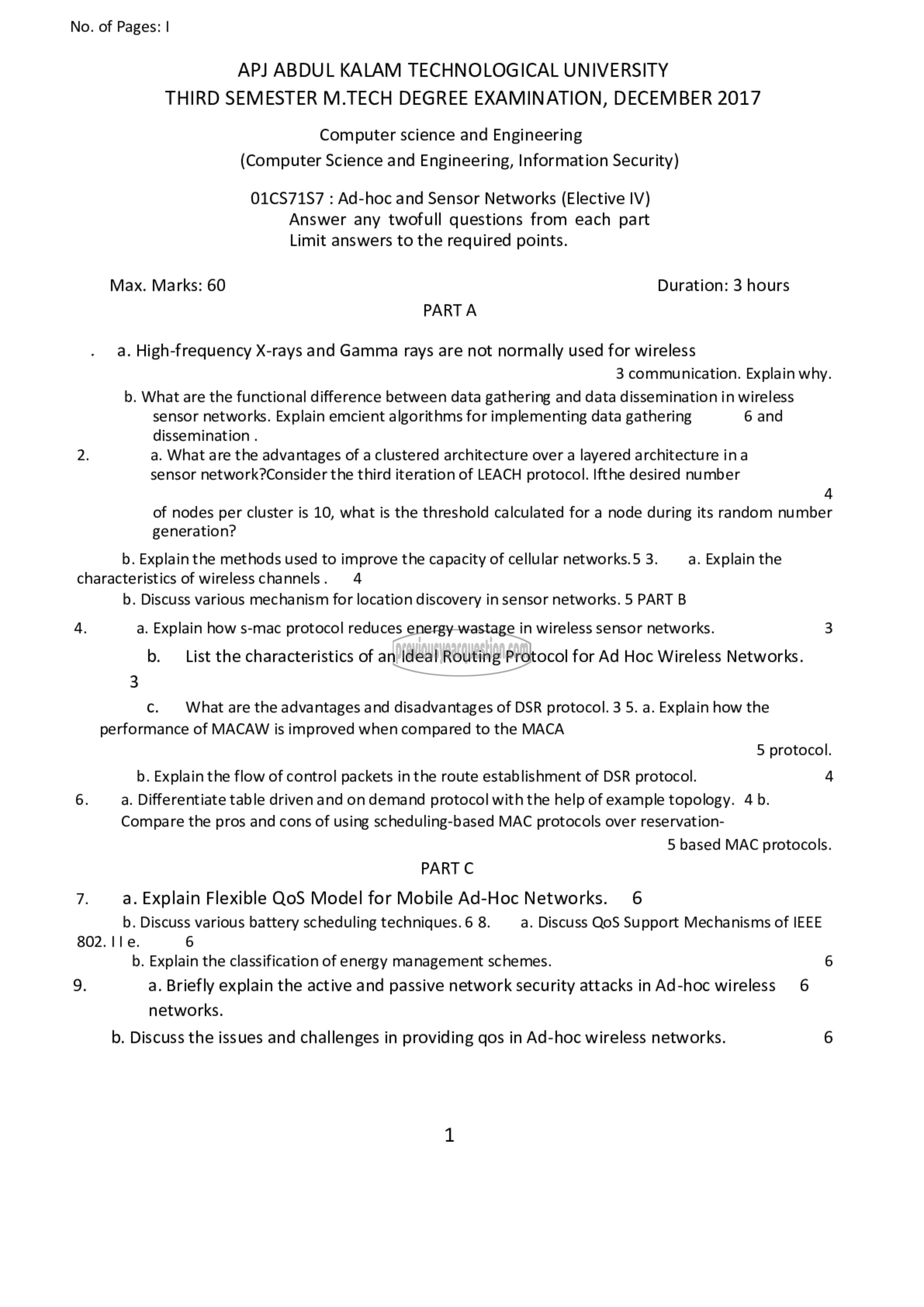APJ ABDUL KALAM TECHNOLOGICAL UNIVERSITY Previous Years Question Paper & Answer
Semester : SEMESTER 3
Subject : Ad-hoc and Sensor Networks
Year : 2017
Term : DECEMBER
Branch : COMPUTER AND INFORMATION SCIENCE
Scheme : 2015 Full Time
Course Code : 01 CS 7157
Page:1
No. of Pages: |
APJ ABDUL KALAM TECHNOLOGICAL UNIVERSITY
THIRD SEMESTER M.TECH DEGREE EXAMINATION, DECEMBER 2017
Computer science and Engineering
(Computer Science and Engineering, Information Security)
01CS71S7 : Ad-hoc and Sensor Networks (Elective IV)
Answer any twofull questions from each part
Limit answers to the required points.
Max. Marks: 60 Duration: 3 hours
PART A
a. High-frequency X-rays and Gamma rays are not normally used for wireless
3 communication. Explain why.
b. What are the functional difference between data gathering and data dissemination in wireless
sensor networks. Explain emcient algorithms for implementing data gathering 6 and
dissemination .
2. a. What are the advantages of a clustered architecture over a layered architecture ina
sensor network?Consider the third iteration of LEACH protocol. Ifthe desired number
4
of nodes per cluster is 10, what is the threshold calculated for a node during its random number
generation?
0. Explain the methods used to improve the capacity of cellular networks.5 3. a. Explain the
characteristics of wireless channels. 4
b. Discuss various mechanism for location discovery in sensor networks. 5 PART B
4. a. Explain how s-mac protocol reduces energy wastage in wireless sensor networks. 3
0. 115 the characteristics of an Ideal Routing Protocol for Ad Hoc Wireless Networks.
c. What are the advantages and disadvantages of DSR protocol. 3 5. a. Explain how the
performance of MACAW is improved when compared to the MACA
5 protocol.
b. Explain the flow of control packets inthe route establishment of DSR protocol. 4
6. a. Differentiate table driven and on demand protocol with the help of example topology. 4 0.
Compare the pros and cons of using scheduling-based MAC protocols over reservation-
5 based MAC protocols.
PART C
7. a. Explain Flexible QoS Model for Mobile Ad-Hoc Networks. 6
0. Discuss various battery scheduling techniques. 6 8. a. Discuss QoS Support Mechanisms of IEEE
802. Ile. 6
b. Explain the classification of energy management schemes. 6
9. a. Briefly explain the active and passive network security attacks in Ad-hoc wireless 6
networks.
b. Discuss the issues and challenges in providing qos in Ad-hoc wireless networks. 6
